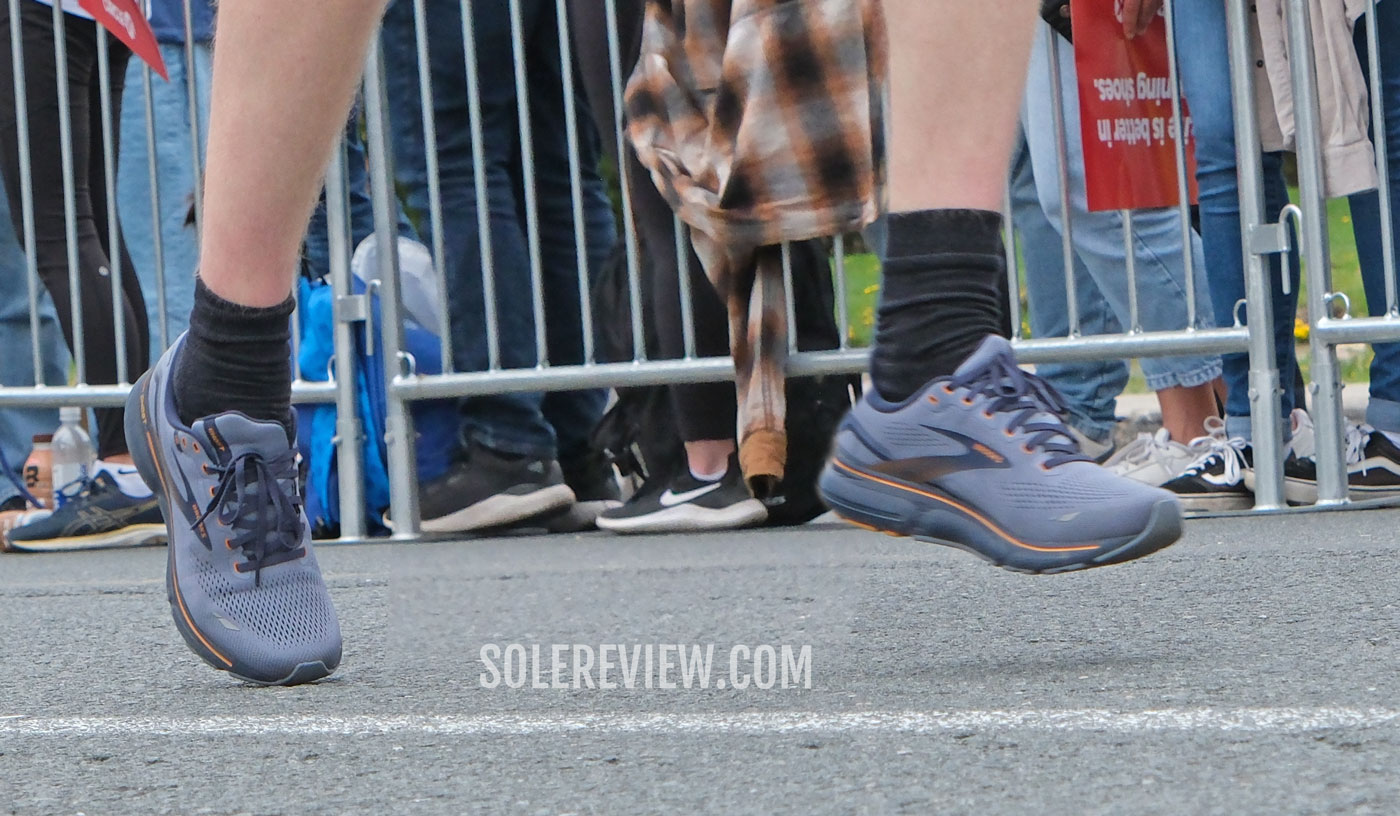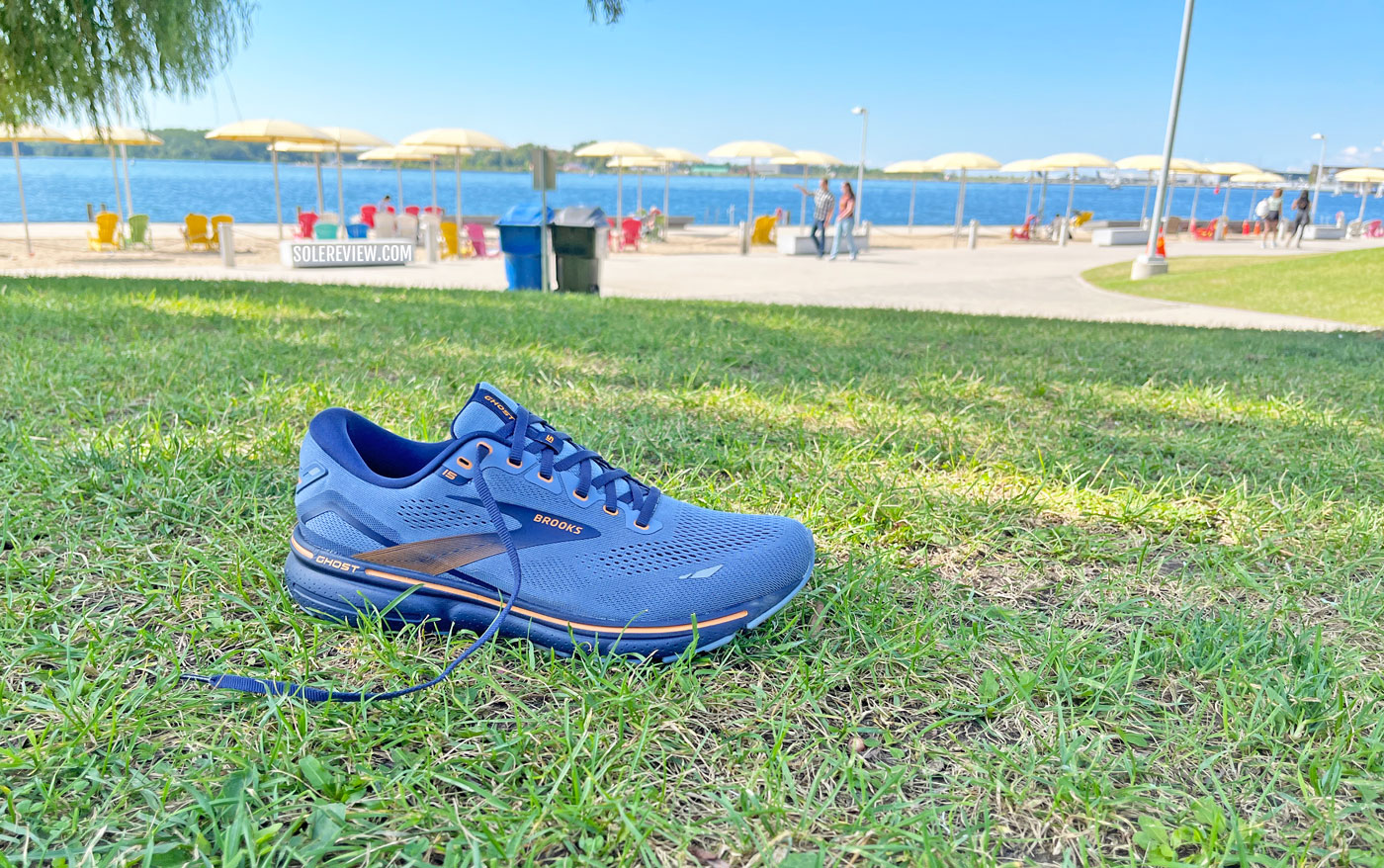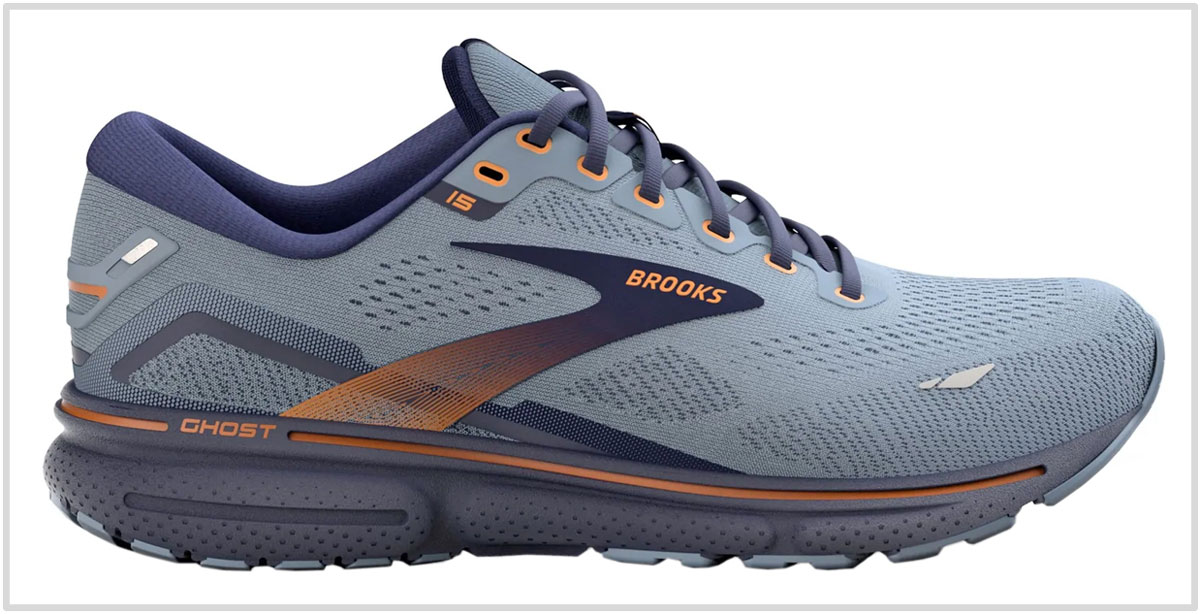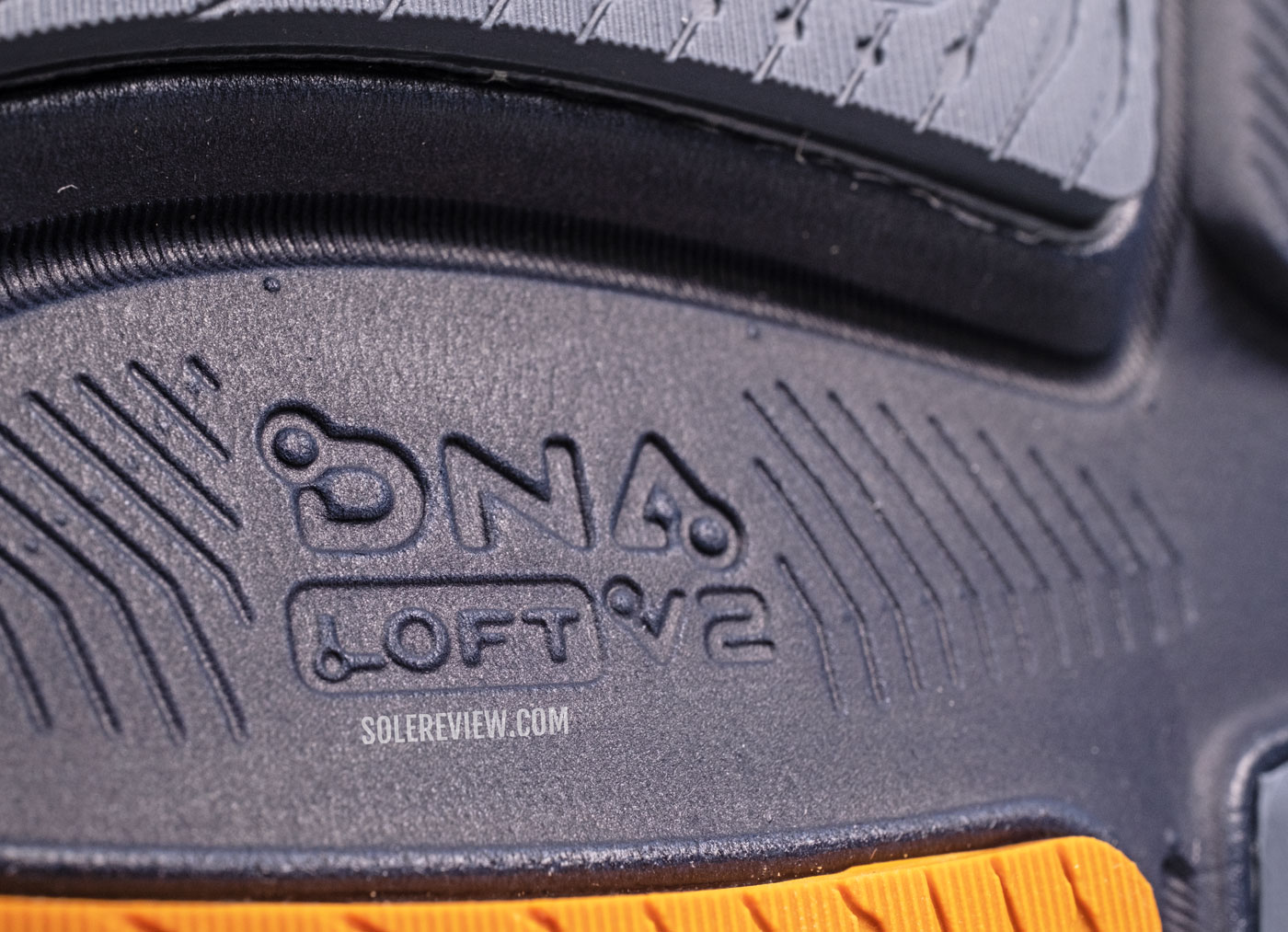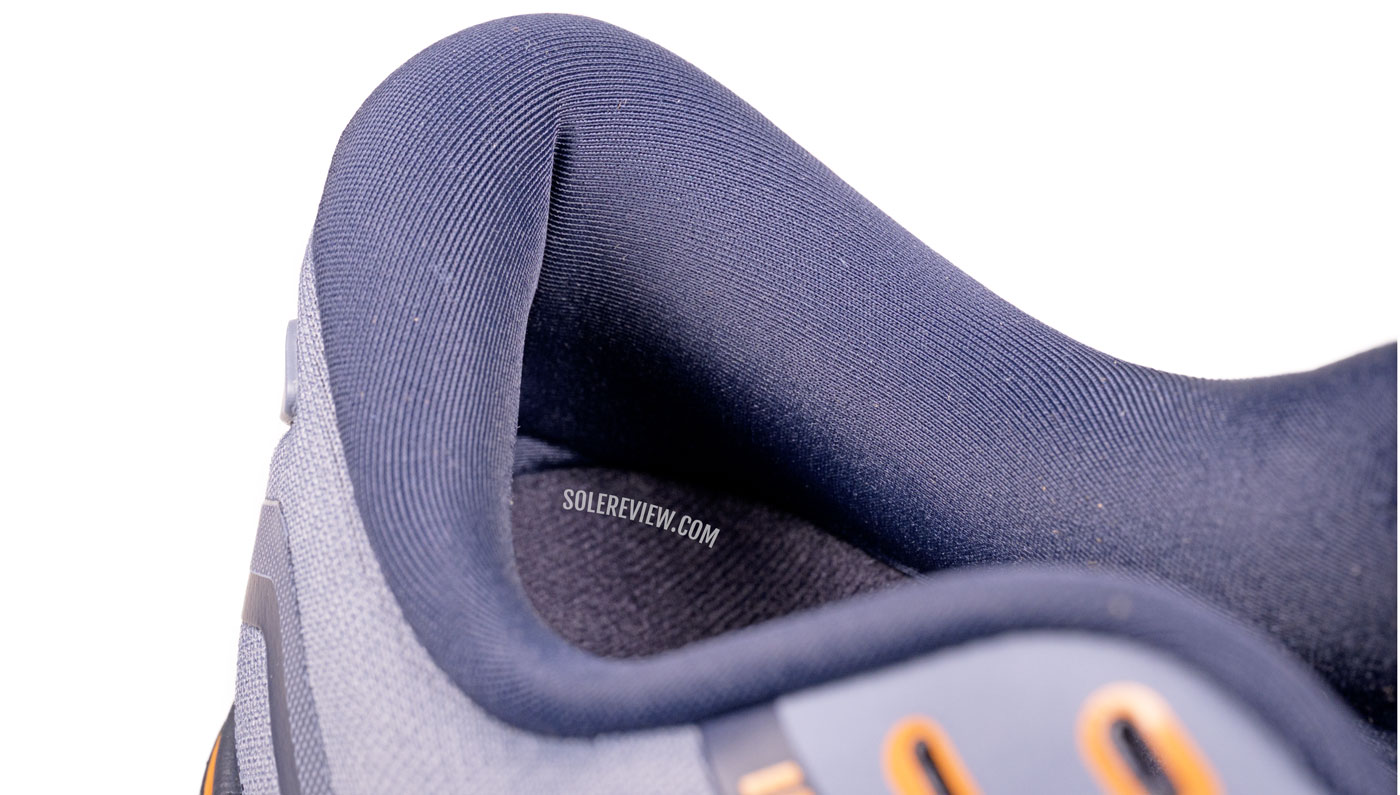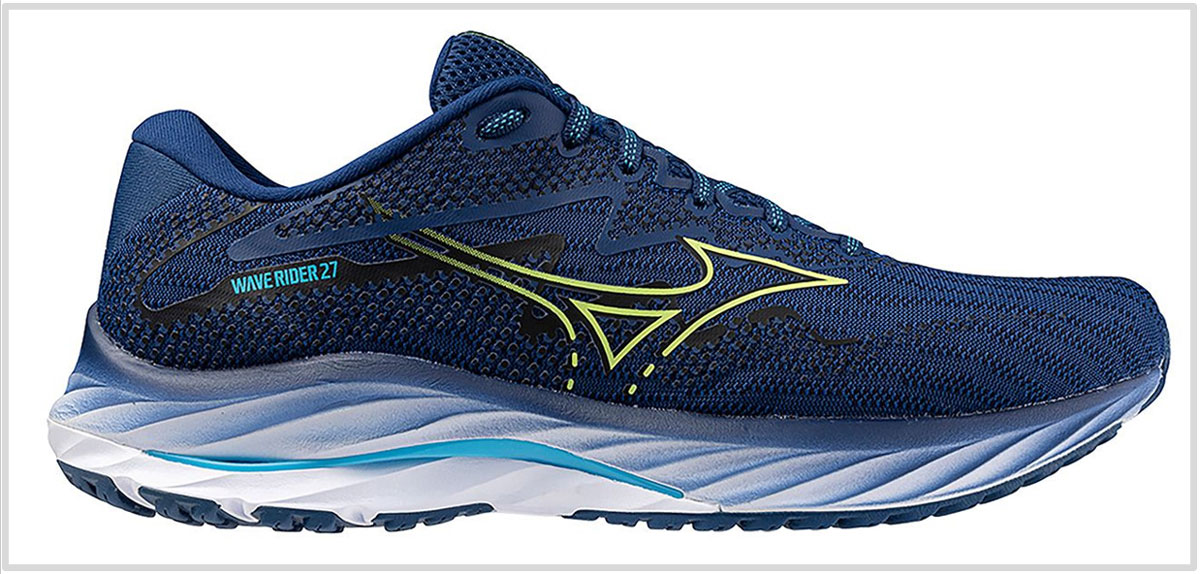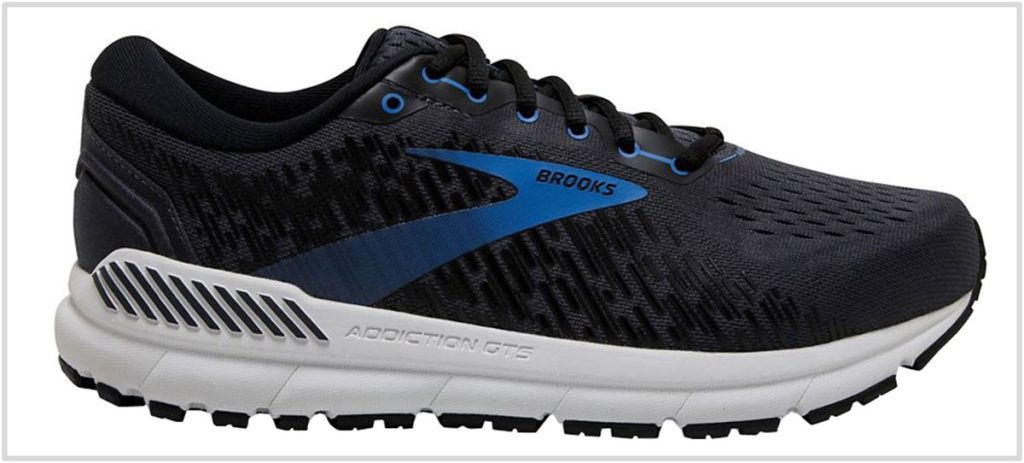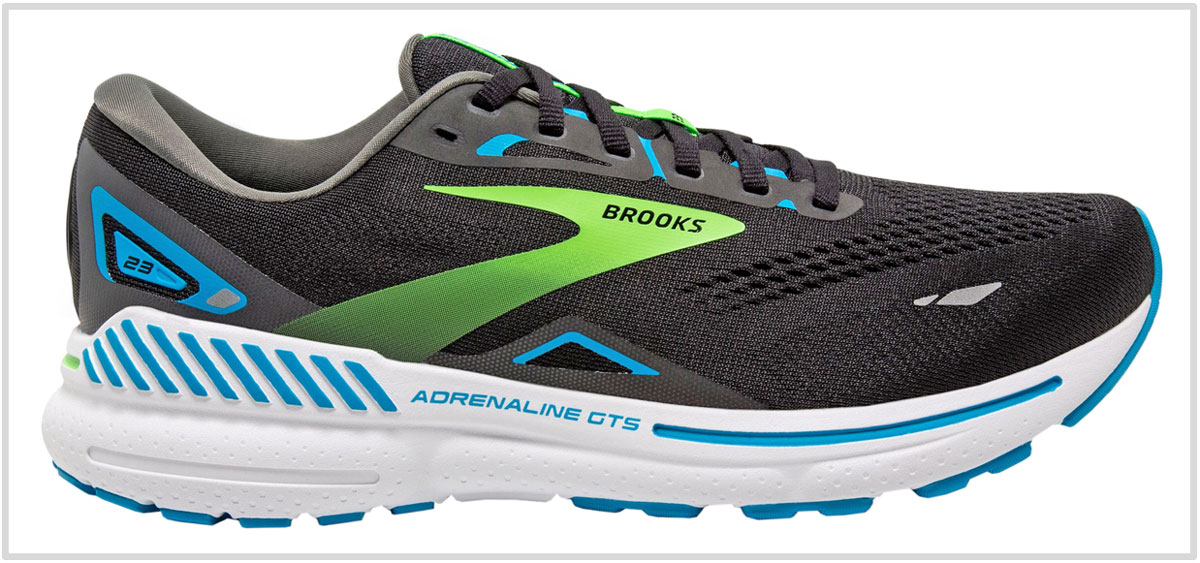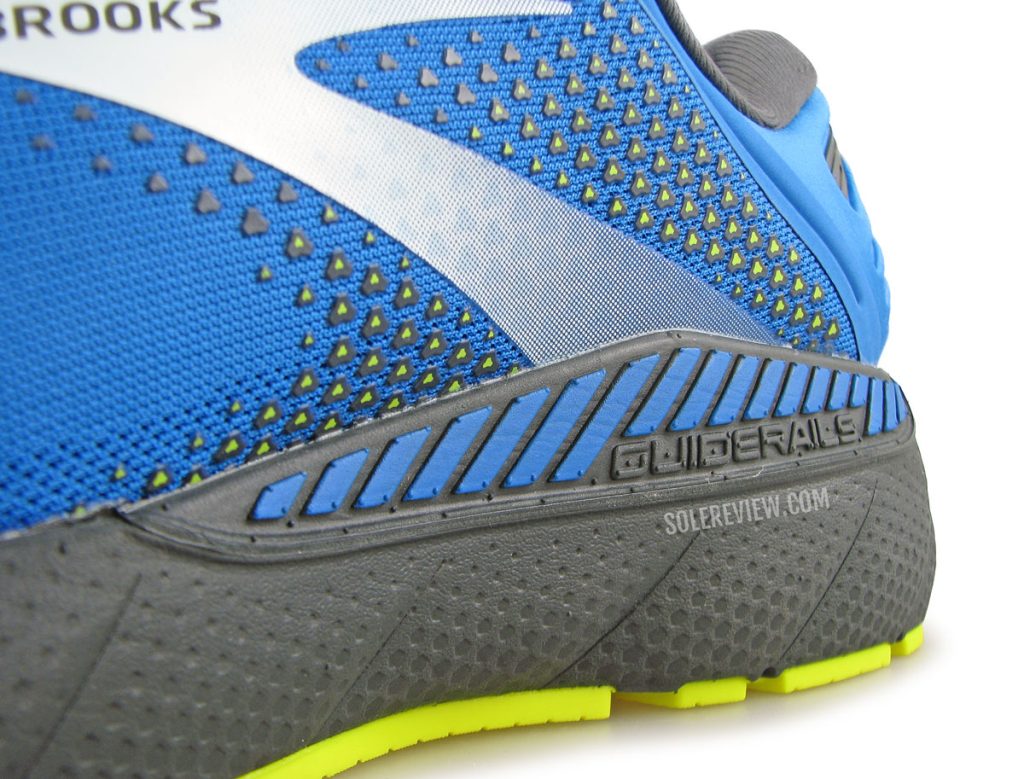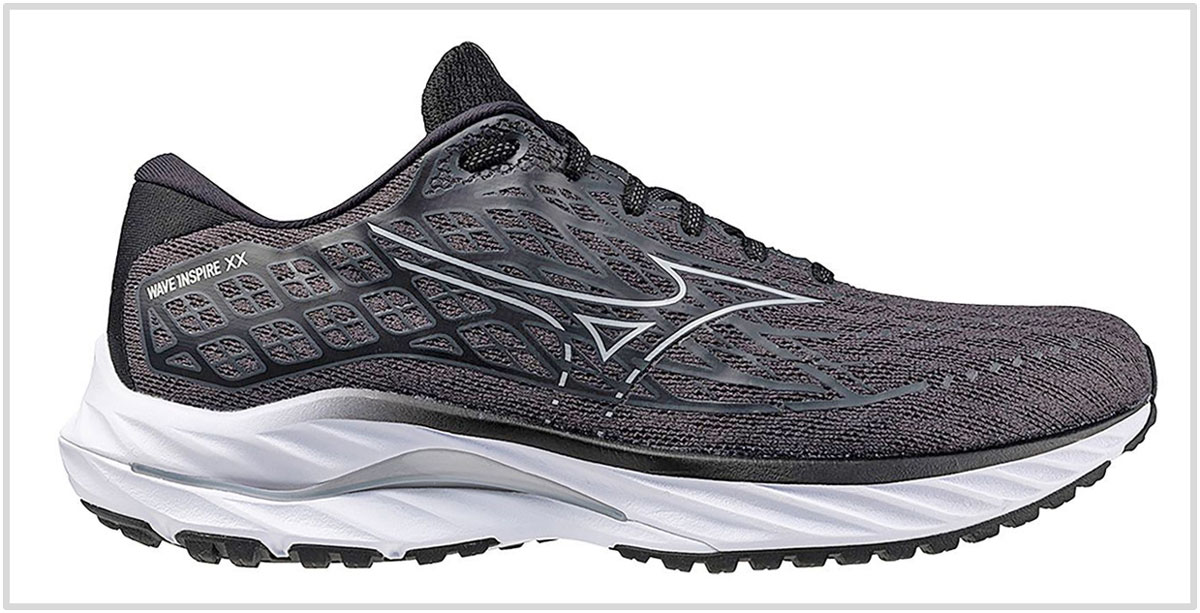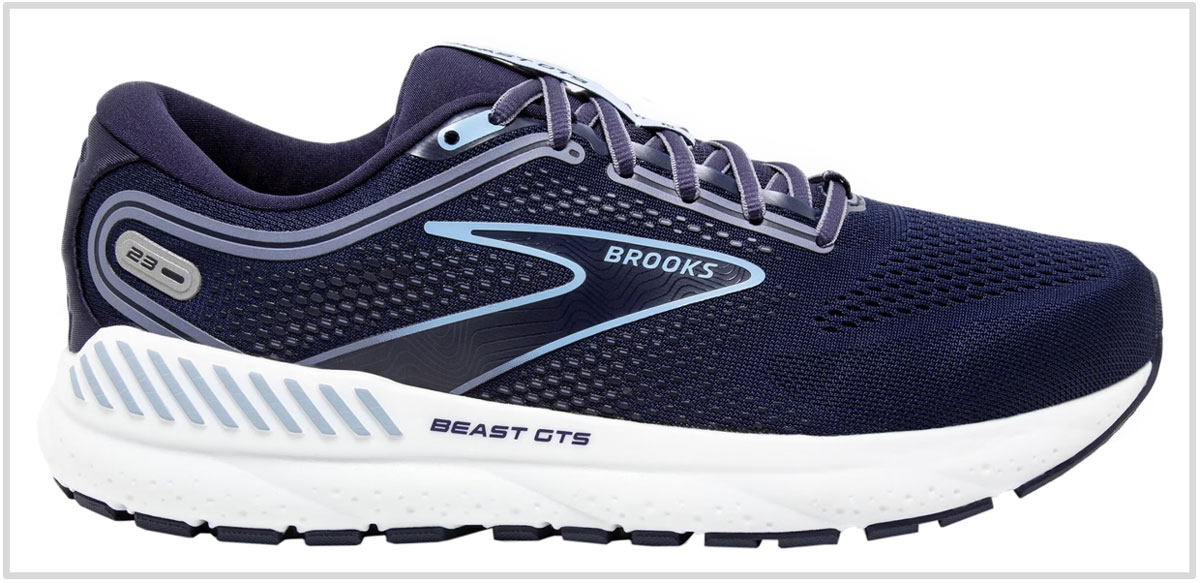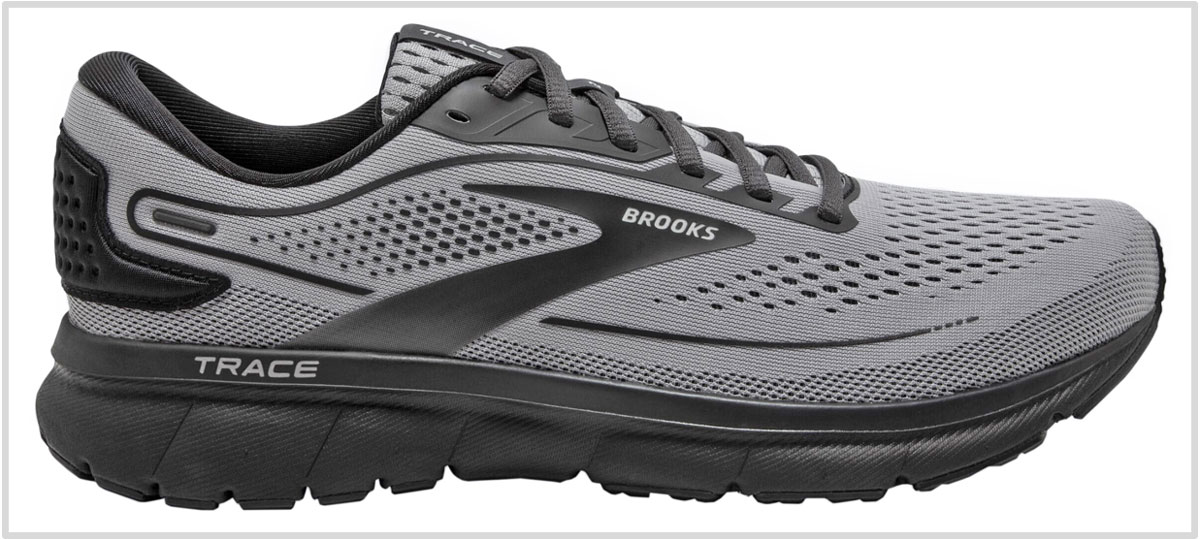This article has been updated with current models for March 2024. Most of the shoes in this guide have been replaced with their updated versions.
In this product guide:
- 1. Factors to consider
- 2. Everyday trainer with a 12 mm drop: Brooks Ghost 15
- 3. Everyday trainer with a 12 mm drop: Mizuno Wave Rider 27
- 4. Max-stability trainer with a 12 mm drop: Brooks Addiction GTS 15
- 5. Stability trainer with a 12 mm drop: Brooks Adrenaline GTS 23
- 6. Stability trainer with a 12 mm drop: Mizuno Wave Inspire 20
- 7. Max-stability trainer with a 12 mm drop: Brooks Beast GTS 23
- 8. Affordable trainer with a 12 mm drop: Brooks Trace V2
The heel drop – which is the difference between the forefoot and heel thickness of a midsole – can be one of the deciding factors for a running shoe buyer.
The consensus is that running shoes with an 8-10 mm drop occupy the ‘sweet spot’ of heel-to-toe offsets.
Anybody who is not familiar with the running shoe industry will find this a bit odd. Because, if 0 mm is the lowest possible heel drop and 12 mm the unofficial high, then logically, a 6 mm drop should be the middle ground.
While running shoes (New Balance Rebel V4, adidas adios Pro 3, Puma Deviate Nitro, etc) with a 6 mm drop exist, most runners see an 8 mm drop shoe as ‘just right’.
It’s fair to say that psychology, not a hard number, dictates running shoe choices. The same psychology also draws a line with 12 mm drop running shoes. Most people view a 12 mm offset as the mental cut-off; anything higher is a difficult sell.
Before heel drops turned into a topic of conversation, a 12 mm heel-to-toe offset was the de facto standard.
Today, while a 12 mm drop is considered on the higher side, there’s a lot of history behind it. Let’s explore some of those reasons, and why a lot of them still matter today.
A 12 mm heel-to-toe drop makes running easier for beginners
Recreational running is a relatively new phenomenon. If someone wore a pair of running shoes (and shorts) and went for a jog in the early 1960s, people would have wondered if it was an unfortunate case of loose screws.
As a sport, running was limited to competitive events, and the general public had yet to embrace it. As time went by, running became popular as a general fitness activity. With that came a need for suitable footwear.
(Related read: The best books on shoes – these cover the history of shoes, and the evolution of the modern athletic shoe.)
Unlike competitive running that employed racing flats without any cushioning, everyday running shoes needed to be more comfortable. And it wasn’t just about ride comfort, but also the need to make running less stressful on the musculoskeletal system.
It also helps to run uphill sections in a higher drop (but not necessarily a higher stack) shoe, as that alleviates pressure on the Achilles.
A higher heel-to-toe drop – which is the difference in thickness between the heel and forefoot midsole – reduces stress on the Achilles Tendon. This makes it easier for new runners to get comfortable while minimizing the risk of soreness.
That performance need hasn’t changed today. A higher heel drop is a good starting point for new runners and less stressful for runners who are recovering from injuries.
A thicker heel was necessary to accommodate cushioning inserts
At the dawn of the running shoe industry, most midsoles were made of die-cut EVA foam with a slim base. The earliest foam materials were not very durable and flattened after a couple of hundred miles. The EVA midsoles were also not very comfortable either.
Eventually, the running shoe design evolved to include thicker Strobel-lasted midsoles and cushioning inserts like Brooks Hydroflow, Nike Air, Saucony Grid, and Reebok Hexalite. Further adjustments were made to include stability devices like medial posts and such.
Rearfoot landing was – and is still – the preferred footstrike
Despite the barefoot running movement and the following rise of running shoe minimalism, a rearfoot landing continues to be the preferred foot-strike pattern. Don’t take our word for it; there is plenty of epidemiological data to support it.
A thicker heel with a beveled design and cushioned midsole makes the rearfoot landings smooth and comfortable.
Solereview recommends: Brooks Ghost 15
Though our guide contains many running shoes with a 12 mm heel-to-toe offset, the Brooks Ghost 15 is our top pick. The Ghost is one of Brooks’s most popular running shoes, and it’s easy to see why.
The single-density DNA Loft (an EVA foam blend) provides ample cushioning that’s versatile enough to be used as a daily trainer or long-distance cruiser. Our wear-tested review puts the Ghost 15 through the paces.
The soft upper is packed with comfort-oriented features like a smooth lining and padded heel. There are also multiple widths available, a wide choice of colors, and sizing that extends to a US 15.
Also, the Ghost 15 is widely available at most retailers and in different countries.
Other than the Brooks Ghost 15, here are our other recommended running shoes with a 12 mm heel-to-toe offset.
2) Daily trainer with a 12 mm drop: Mizuno Wave Rider 27
A stiff PEBAX plate sandwiched within the foam midsole gives most Mizuno shoes – including the Rider 27 – its signature ride quality and stable ride.
The Wave Rider 27 still has the wavy plate but is a much softer shoe. The ‘Wave’ plate is also smaller than what it used to be 4-5 years ago.
As a result, the plate makes the Rider 27 stable and transition-friendly, but the soft cushioning no longer needs a break-in period.
The engineered knit upper and spacer mesh tongue make the fit comfortable yet secure. There’s an inner gusset as well.
3) Max-stability trainer with a 12 mm drop: Brooks Addiction GTS 15
Even though the Addiction GTS 15 is very different than the Addiction 14, it’s still a 12-mm heel drop trainer.
We’d classify the Addiction GTS as a walking shoe rather than a running shoe. The 12.2-ounce/346-gram weight makes it difficult for the Addiction to be taken seriously as a running shoe.
In return for its 12-ounce bulk, the Addiction GTS 15 offers an ultra-supportive midsole with a generous amount of cushioning. The GTS 15 has one important feature that the Addiction 14 did not have – the midsole has ‘Guiderails’ on its side for increased under-arch support.
The engineered mesh upper is soft, spacious, breathable, and sells in three additional sizing widths.
So how are the Addiction GTS 15 and Beast GTS 23 different? The Addiction uses a different midsole foam, has more outsole rubber coverage, and is slightly heavier. In short, it offers a marginally higher level of stability than the Beast.
4) Mild-stability trainer with a 12 mm drop: Brooks Adrenaline GTS 23
The Adrenaline GTS 23 is the stability version of the Ghost 15; its DNA Loft midsole has a nearly identical ride, but with one important difference. The midsole has raised sidewalls called ‘Guiderails’ that cup the foot on either side.
Do the Guiderails work? As in, influence the gait during runs? We highly doubt it. That said, it does offer a cushioned and stable ride with a heightened sense of under-arch support.
Just like the Ghost, the GTS 23’s upper is accommodating yet secure. It won’t be a stretch to call it plush due to the use of spongy spacer mesh and foam-quilted heel.
If you’re upgrading from the GTS 22, you won’t notice a whole lot of difference.
5) Mild-stability trainer with a 12 mm drop: Mizuno Wave Inspire 20
The Mizuno Inspire 20 is the ‘support’ variant of the Wave Rider 27. But take that analogy with a grain of salt, as both shoes are fairly similar.
Both the Rider and Inspire have a soft midsole with a stiff Wave plate under the heel.
The only difference is that the Inspire 20’s plate is reinforced on the inner side for added stiffness. The Inspire’s upper is reinforced with fused overlays and heavier mesh.
Everything else feels similar to the Rider 27, so the cushioning has a familiar feel. The Inspire 20 is a stable running shoe that’s good for everyday miles and slightly quicker (5 min/km, 8 min/mile) paces.
6) Max-stability trainer with a 12 mm drop: Brooks Beast GTS 23
From what we’ve seen (and experienced), the ‘Guiderails’ on Brooks running shoes oversell their usefulness. That also holds for any other ‘stability’ shoe with raised midsole walls; they have very little effect on limiting pronation.
Of greater importance is the overall midsole stability, and that’s an area where Brooks excels – be it the Ghost 15, Glycerin 21, or Beast GTS 23.
The Brooks Beast GTS 23 weighs 11.9 ounces (337 grams), so it’s not your everyday trainer. The ultra-wide midsole offers a much higher level of support over lighter trainers.
Brooks’s DNA Loft 3 midsole foam is inherently very stable and resistant to bottoming out. The Beast is like a wider Glycerin with raised midsole walls and more outsole rubber. While the Beast is a decent shoe for slow-paced runs and walks, its versatility is limited.
The plush and secure upper is a good match for the cushioned midsole. It keeps the foot supported inside the shoe in comfort, and there’re optional widths available (wide and extra-wide) as well.
7) Affordable trainer with a 12 mm drop: Brooks Trace 2
This $100 running shoe is a diet version of the Brooks Ghost. Given the Brooks Trace 2’s entry-level pricing, the upper is built to a cost.
That said, the Trace V2 has all the necessary bits – like a breathable engineered mesh upper, padded heel, and a 6+1 row lacing setup. There’s even an optional width – something that the Trace V1 lacked.
The midsole uses a lower-tier foam tech called BioMogo DNA – an EVA foam blend that used to be the cushioning workhorse on the older versions of the Brooks Ghost.
At 8.6 ounces/244 grams, the Trace is fairly lightweight. This gives the midsole a surprisingly high level of versatility; use the Trace as a daily trainer or even a tempo trainer.
Do you own any of these shoes? Improve this review by sharing your insights – submit a review here.

